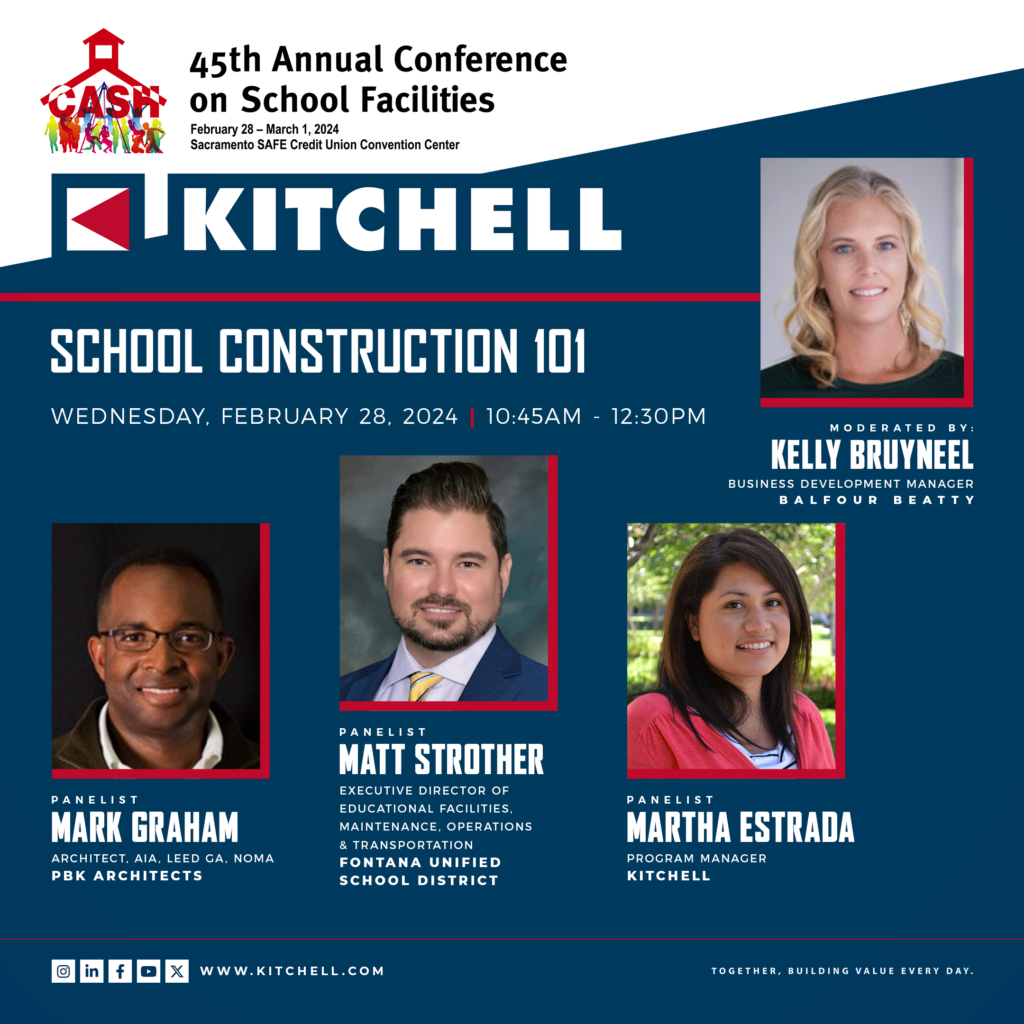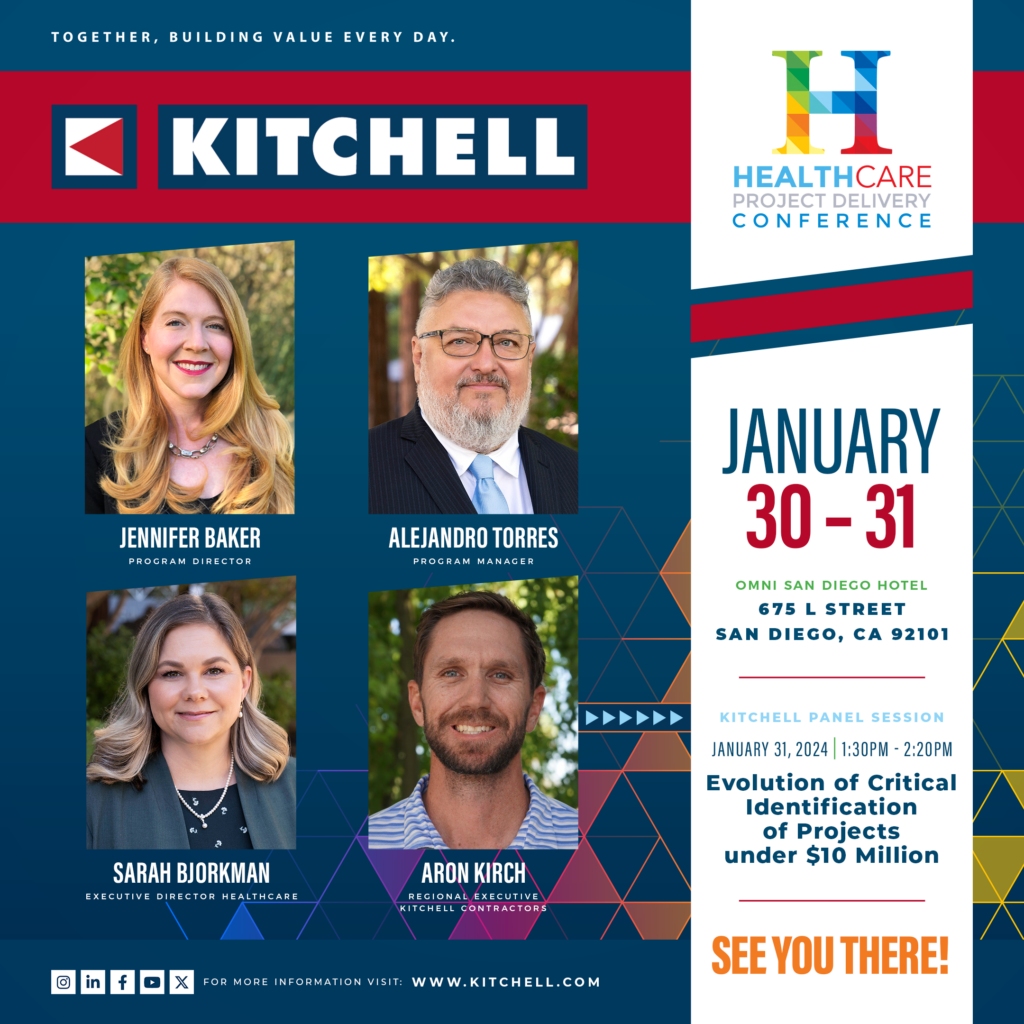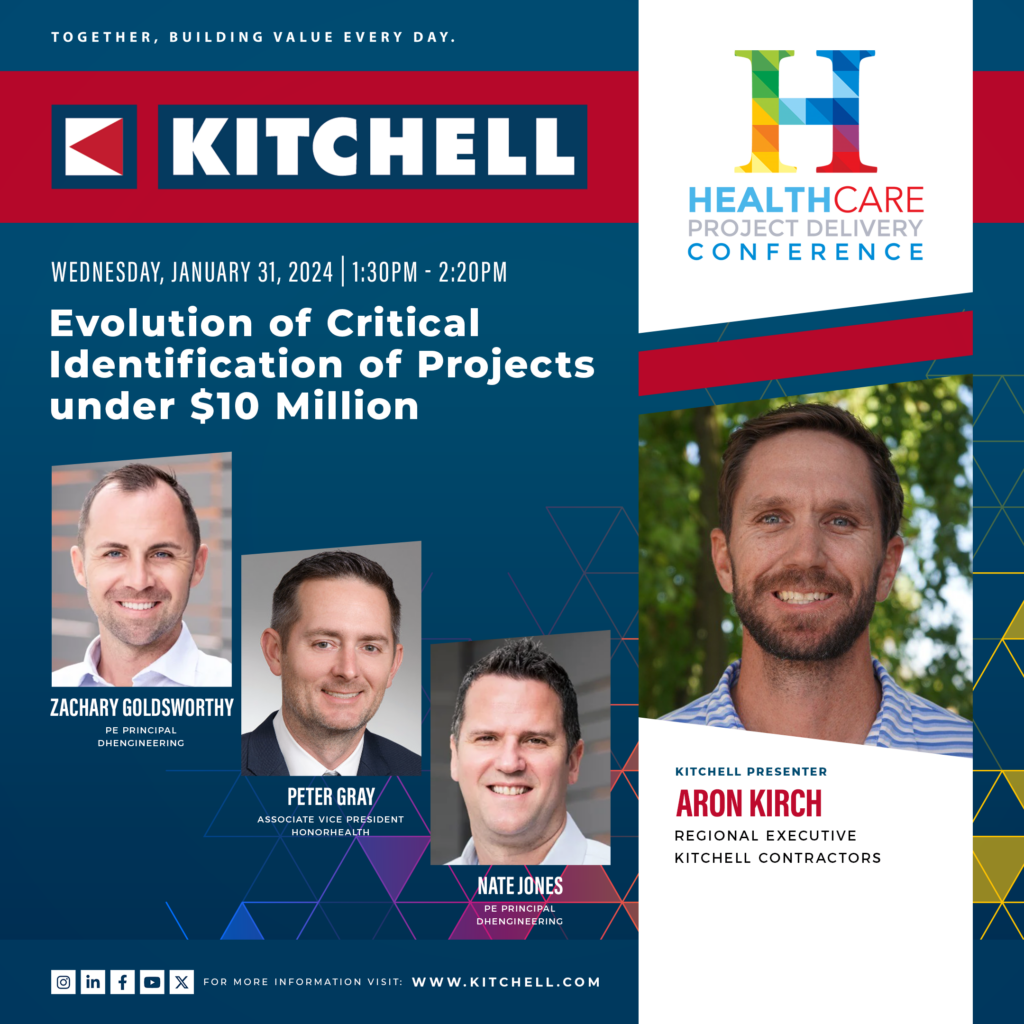The Coalition for Adequate School Housing (CASH) 45th Annual Conference on School Facilities is here! Wednesday – Friday, February 28-March 1, Kitchell employee-owners from all over California will convene at Sacramento’s SAFE Convention Center to learn, network and help you get to know Kitchell!

In a hurry? We get it! Stop in for a quick drink and speedy networking at The Park Ultra Lounge for Kitchell’s CASH n’ DASH mixer on Thursday, February 29! We will be there from 5:30-9:30pm to give you more than enough time to stop in and connect with your favorite Kitchell folks before you dash off to your next event. We can’t wait to see you there!

While you’re at the conference, be sure to visit Kitchell at booth #319/321. Connect with Kitchell employee-owners from across California to learn more about who we are and what we do – and maybe win some prizes while you’re there!

We are thrilled to announce education opportunities featuring Kitchell at this year’s conference! First up on February 28th, we have “School Construction 101” with Kitchell Program Manager Martha Estrada. She will be joined by fellow panelists Matt Strother (Fontana Unified School District) and Mark Graham (PBK Architects) for this discussion led by moderator Kelly Bruyneel (Balfour Beatty). This workshop will offer the basics of the school construction process, including team selection, the RFQ/RFP process, roles and responsibilities, budgeting and finance, contract negotiation, design and construction documents, schedule and cost management, project delivery methods, bidding and communication.

Also on February 28th, Kitchell Senior Project Engineer Kyle Morse will be joined by Cherie Chenoweth (San Juan Unified School District) for “Managing Multiple Year Bond Programs in a Fiscal Year World,” moderated by Nicholas Johnson (Kahua). This session will offer a case study of how the team at San Juan Unified School District has set up executive dashboards from which they can oversee all financial activity for their many projects funded by multiple bond measures and funding sources. The panel will discuss the process for setting up your projects for success, including lessons learned and then demonstrate how they use technology to better manage multiple programs from a single dashboard. Attendees will also gain best practices for setting up project controls to ensure successful audits. This session will include a live demonstration, a live survey of audience members to help them self-assess their current needs and a substantial audience Q&A period.

On February 29th, Kitchell Project Director Jeff Dees will be moderating the panel discussion “Creating Success in a Volatile Construction Market,” featuring panelists Carey Upton (Santa Monica-Malibu Unified School District), Matt Washburn (Folsom-Cordova Unified School District) and Adam Villacara (Roebbelen Contracting, Inc.). When it comes to keeping construction projects under budget and on time, it is essential to focus on the Client’s goals and needs. Without proper communication, planning and structure, projects may be at risk of missing important deadlines. As every project is unique, it is even more important to be prepared and ready to meet challenges to reduce disruptions and keep the project budget in line. Our panelists will discuss their expectations, solutions and how they are creating project success in a volatile and unpredictable market. Don’t miss this chance to learn with Kitchell on Thursday, February 29 at 8:30am!
Be sure to check out the many opportunities to #konnectwithkitchell at this year’s conference!






